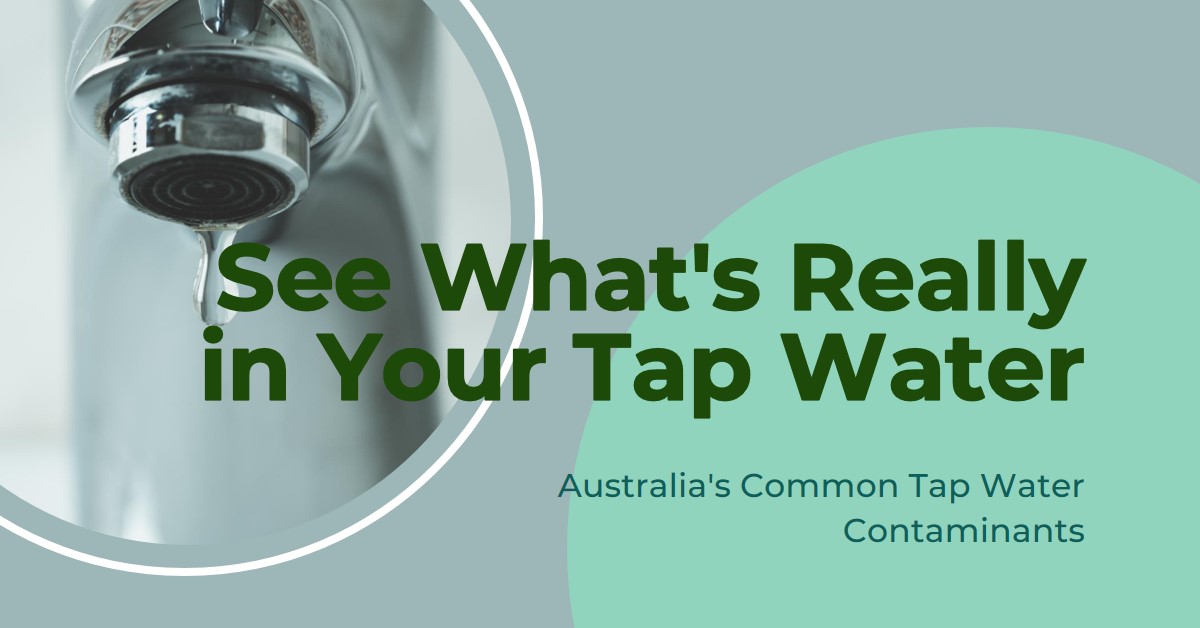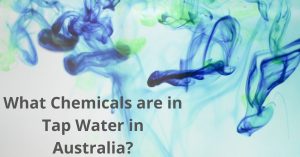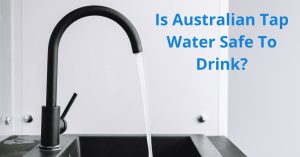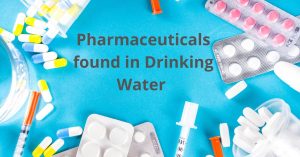Do you ever wonder what’s hiding in your tap water?
In Australia, your drinking water is usually supplied by the local area’s water authority. There’s no doubt that this water supply is generally considered safe to drink. That being said, if you’re looking to ensure that you and your family are getting the highest quality water, you’ll want to avoid any dangerous substances that can seriously harm you by using one of the best water filters Australia has available. From chemicals like arsenic and chlorine to bacteria and viruses, these contaminants can lead to range of consequences that most of us will want to avoid.
Arsenic
You may be concerned about the presence of arsenic in your tap water. Arsenic exposure can have a significant impact on cardiovascular health. Studies have shown that long-term exposure to high levels of arsenic in drinking water can increase the risk of cardiovascular diseases, such as heart attacks and strokes.
Furthermore, there’s a connection between arsenic contamination and neurological impairment. High levels of arsenic in the body have been linked to cognitive deficits, developmental delays, and neurological disorders.
Arsenic poisoning can also have detrimental effects on the body’s immune system. It can weaken the immune response, making individuals more susceptible to infections and diseases.
Additionally, arsenic contamination in groundwater poses implications for rural communities. These communities often rely on groundwater as their main source of drinking water, putting them at a higher risk of arsenic exposure.
Finally, arsenic can be found in food and may pose potential health risks for consumers. It can accumulate in certain food products, such as rice and seafood, and long-term consumption of these contaminated foods can lead to health issues.
It’s important to be aware of the potential risks associated with arsenic to ensure the safety of your tap water.
Chlorine
Chlorine is a chemical disinfectant commonly added to tap water in Australia. It plays a crucial role in preventing waterborne diseases by effectively removing microorganisms from the water.
However, there are pros and cons to using chlorine as a disinfectant. On one hand, chlorine is a cost-effective way to kill bacteria and viruses in water. On the other hand, it can have negative impacts on aquatic ecosystems when it enters rivers and streams through wastewater discharge.
Additionally, chlorine can have drying effects on the skin and hair, causing irritation to the eyes and nose.
Despite its drawbacks, chlorine remains an important tool in ensuring the safety of drinking water by effectively eliminating harmful microorganisms.
Nitrate
Discussing the presence of nitrates in tap water is important for understanding the potential health risks associated with drinking water in Australia. Nitrates, which are chemical compounds made up of nitrogen and oxygen, can contaminate water sources through various sources such as fertilisers, septic systems, and industrial pollution. High levels of nitrates in drinking water can have adverse health effects, especially for infants and pregnant women.
Excessive nitrate consumption can lead to a condition called methemoglobinemia, or ‘blue baby syndrome,’ which impairs the blood’s ability to carry oxygen. To ensure safe drinking water, regulatory limits for nitrates have been set in Australia. Testing methods, such as spectrophotometry, are used to measure nitrate levels in water samples.
Additionally, efforts to prevent nitrate contamination include proper agricultural practices and wastewater treatment. The environmental impacts of nitrate pollution include eutrophication, where excessive nutrient levels stimulate the growth of harmful algal blooms, leading to oxygen depletion in aquatic ecosystems.
Lead
Lead contamination is another common tap water contaminant in Australia that poses significant health risks.
Exposure to lead can have serious health effects, especially in children and pregnant women. It can impair brain development, cause learning disabilities, and lead to behavioural problems.
Sources of lead contamination in tap water can include old lead pipes, plumbing fixtures, and lead solder used in plumbing systems. To test and detect lead in drinking water, you can use lead testing kits or send samples to a certified laboratory.
Strategies for efficient lead tap water filtration include flushing the pipes, installing point-of-use bench top water filters, and replacing old lead pipes.
Public health policies and regulations regarding lead levels in drinking water are in place to ensure safe drinking water for all Australians.
It’s important to be aware of the health risks associated with lead and take the necessary steps to protect yourself and your family.
Copper
When it comes to tap water contamination in Australia, one common concern is the presence of copper. Here are some key points about copper contamination in tap water:
- Health effects and prevention: Copper is an essential mineral for the body in small amounts, but high levels in drinking water can lead to health issues such as stomach cramps, nausea, and diarrhea. To prevent copper contamination, it’s important to monitor copper levels in tap water and take the necessary measures.
- Copper levels in different regions of Australia: Copper levels can vary in different regions of Australia due to factors like the age of the plumbing system and the source of water. Regular testing is crucial to ensure that copper levels are within safe limits.
- The role of copper pipes in tap water contamination: Copper pipes can release copper into tap water over time. This can happen due to corrosion or the presence of acidic water. Older homes with copper plumbing are more likely to have higher copper levels in the water.
- Copper removal methods and technologies: There are several methods to remove copper from tap water, such as activated carbon filters, ion exchange, and reverse osmosis systems. These technologies can effectively reduce copper levels and provide safer drinking water.
It is important to be aware of copper contamination in tap water and take the necessary steps to ensure the safety of your drinking water. Regular testing, proper maintenance of plumbing systems, and the use of appropriate filtration methods such as a high quality gravity water filter system can help prevent long-term exposure to copper in drinking water.
Fluoride
Fluoride is a chemical compound commonly found in tap water in Australia. It’s added to water supplies as a means of preventing tooth decay and promoting dental health. The benefits of fluoride in dental health are considered well-documented, but there is a wide body of evidence that questions the strategy of adding fluoride to our municipal town water supplies.
However, there are potential risks associated with excessive fluoride exposure. High levels of fluoride can lead to dental fluorosis, a condition that causes discoloration and mottling of the teeth. In addition, there’s ongoing controversy surrounding water fluoridation, with some groups expressing concerns about the impact of fluoride on children’s development and its potential cancer risk.
For those of us that would prefer not to ingest fluoride in our drinking water, effective fluoride water filtration is a great option.
Chloride
One of the common tap water contaminants in Australia is chloride, which can have potential health effects on individuals. Here are some key points to consider regarding chloride contamination:
- Harmful effects:
High levels of chloride in tap water can have adverse health effects. Excessive intake of chloride can lead to dehydration, electrolyte imbalances, and high blood pressure. Individuals with kidney problems or hypertension may be more sensitive to the harmful effects of chloride. - Environmental impact:
Chloride contamination can also have a negative impact on aquatic ecosystems and wildlife. High chloride levels in water bodies can harm aquatic plants and animals, disrupt the balance of the ecosystem, and reduce biodiversity. - Remediation methods:
There are various techniques for removing chloride from drinking water, such as reverse osmosis, distillation, and ion exchange. These methods can effectively reduce chloride levels and ensure safer drinking water. - Monitoring and regulation:
To ensure safe chloride levels in tap water, there are regulations and monitoring practices in place. Water authorities regularly test and monitor chloride levels to comply with national standards and guidelines. - Public awareness and education:
It’s crucial to educate the public about chloride contamination and ways to reduce exposure. Promoting awareness about the potential health risks and encouraging water conservation practices can help minimise chloride contamination in tap water.
Manganese
To understand the impact of chloride contamination on tap water, it’s important to also address the presence of another significant contaminant: manganese.
Manganese is a naturally occuring element that can enter drinking water through various sources, including industrial discharges, mining activities, and leaching from rocks and soil.
While manganese is an essential nutrient for the human body, excessive levels in drinking water can have negative effects on health. Long-term exposure to high levels of manganese in tap water has been associated with neurological impairments, such as cognitive and motor deficits.
Children are particularly vulnerable to the effects of manganese, as their developing brains are more susceptible to the toxic effects of this contaminant.
Water treatment processes, such as filtration and oxidation, can help remove manganese from drinking water to reduce the potential risks of long-term exposure. Regular monitoring and maintenance of water treatment systems are crucial to prevent manganese contamination and ensure the safety of tap water.
Chromium
Chromium is a chemical element that can be found in Australia’s tap water as a common contaminant. Here are some key points to know about chromium in tap water:
- Environmental impact: Chromium enters the water supply through industrial activities such as metal plating, leather tanning, and textile manufacturing. It can also be present in natural sources like rocks and soil. The discharge of chromium into water bodies can have detrimental effects on aquatic ecosystems.
- Health risks: Consuming high levels of chromium in drinking water can pose health risks. Short-term exposure to chromium can cause skin irritation and respiratory problems. Long-term exposure has been linked to an increased risk of stomach cancer and complications during childbirth.
- Water treatment methods: Water treatment facilities use various methods to remove chromium from tap water, including coagulation, filtration, and ion exchange. These processes help reduce the concentration of chromium to meet regulatory standards.
- Regulatory standards and public awareness: Regulatory standards for chromium in drinking water have been set to protect public health. Public awareness campaigns and educational programmes aim to inform the population about the potential risks of chromium contamination and the importance of safe drinking water.
It is crucial to monitor and control chromium levels in tap water to ensure the well-being of individuals and the environment.
Sulfate
Now let’s shift our attention to another common contaminant in Australia’s tap water: sulfate.
Sulfate is a chemical compound that can have a significant impact on water quality and human health. High levels of sulfate in drinking water can cause a laxative effect, leading to gastrointestinal issues such as diarrhea.
Sulfate contamination can occur from natural sources, such as underground minerals and rocks, as well as from human activities like mining and industrial processes.
To remove sulfate from tap water, various techniques can be employed, including reverse osmosis and ion exchange. However, the effectiveness of these methods may vary depending on the specific water source and sulfate concentration.
Preventive measures to reduce sulfate contamination include proper waste management and implementing water treatment processes. Additionally, it’s important to note that sulfate can contribute to the corrosion of plumbing systems and can also cause aesthetic issues in tap water, such as a bitter taste and unpleasant odour.
Aluminium
Moving on to another common contaminant in Australia’s tap water, let’s delve into the topic of aluminum. Here are some potential discussion ideas about aluminium that aren’t relevant to the other contaminants listed above:
- Aluminium toxicity: Understanding the health risks associated with excessive aluminium exposure. Excessivealuminiumm intake has been linked to neurological disorders, such as Alzheimer’s disease, and bone diseases, such as osteoporosis.
- Aluminium in food packaging: Exploring the presence of aluminium in food containers and its potential effects on human health. Aluminium can leach into food, especially when it comes into contact with acidic or salty foods, leading to potential health risks.
- Aluminium in cosmetics: Investigating the use of aluminium compounds in beauty and personal care products and their potential impact on the body. Aluminium compounds are commonly used as antiperspirants and can be absorbed through the skin, raising concerns about their potential health effects.
- Aluminium in cookware: Examining the safety of aluminium cookware and its potential leaching into food during cooking. Cooking acidic or salty foods in aluminium cookware can result in aluminium leaching into the food, which may have health implications.
These are just a few examples of the potential risks and concerns associated with aluminium in various aspects of our daily lives. It’s important to stay informed and take necessary precautions to minimise exposure to this common tap water contaminant.
Mercury
One common tap water contaminant in Australia is mercury, which can have harmful effects on your health. Mercury is a liquid heavy metal found naturally in the earth. It enters drinking water through soil erosion, industrial processes, and agricultural run-off.
Exposure to mercury can lead to kidney damage and harmful symptoms in the body. It’s especially harmful to young children and can interfere with brain development. The potential health effects of mercury include neurological disorders, kidney damage, and cardiovascular problems.
Regulatory standards have been put in place to limit the amount of mercury in drinking water. Treatment methods such as activated carbon filtration and reverse osmosis can effectively remove mercury from tap water.
It’s important to ensure that your tap water is regularly tested for mercury contamination to protect your health.
Pesticides
To continue with the discussion on Australia’s common tap water contaminants, let’s delve into the issue of pesticides and their potential impact on your health.
Here are some key points to consider:
- Impact on the agricultural industry: Pesticides are widely used in farming to protect crops from pests and diseases. However, excessive use and improper disposal can lead to contamination of water sources, affecting the quality of drinking water.
- Health risks and effects: Exposure to pesticides through drinking water can have adverse health effects. Some pesticides have been linked to various health issues, including damage to the nervous system, irritation of the eyes, skin, and airways, carcinogenic potential, and disruption of hormones or the endocrine system.
- Environmental implications: Pesticides can also have significant environmental impacts. They can contaminate soil, waterways, and ecosystems, harming aquatic life and disrupting the balance of natural ecosystems.
- Regulation and monitoring: In Australia, the use of pesticides is regulated to ensure their safe and responsible use. Government agencies monitor pesticide residues in food and drinking water to protect public health.
In order to mitigate the risks associated with pesticides, it’s important to explore alternatives, promote sustainable farming practices that minimise the use of harmful chemicals, and prioritise environmental stewardship. Also see our blog post Does Reverse Osmosis Remove Pesticides from Water?
Cadmium
Cadmium can be found in Australia’s tap water due to its release into the environment through mining, smelting, and the corrosion of underground pipes. Cadmium exposure poses significant health risks and requires preventive measures.
High levels of cadmium in drinking water can contaminate food and have a detrimental impact on human health. It’s essential to understand the sources, distribution, and remediation strategies of cadmium in soil and water.
Cadmium toxicity in aquatic ecosystems has implications for biodiversity and ecosystem health. Additionally, there’s evidence linking cadmium exposure to chronic diseases.
To ensure the safety of tap water, it’s crucial to implement effective measures to reduce cadmium contamination and minimise the associated health risks.
Zinc
Zinc, another common tap water contaminant in Australia, can have significant health implications and requires proper management to ensure safe drinking water. Here are some key points about zinc in drinking water:
- Zinc exposure: High levels of zinc in drinking water can occur through industrial discharges, mining activities, and the corrosion of galvanised pipes.
- Health effects of zinc: While zinc is an essential nutrient for the body, excessive intake through drinking water can lead to gastrointestinal issues, such as stomach cramps and diarrhea. Prolonged exposure to high levels of zinc may also affect the immune system and disrupt the balance of other essential minerals in the body.
- Zinc contamination sources: Zinc contamination in tap water can originate from natural sources, industrial processes, and household plumbing systems. It’s important to identify and address the specific sources of zinc contamination to ensure safe drinking water.
- Zinc removal methods: Treatment methods such as activated carbon filtration, reverse osmosis, and distillation can effectively remove zinc from drinking water. Regular monitoring and maintenance of water treatment systems are crucial to ensuring effective zinc removal of zinc and maintaining water quality standards.
Barium
Barium is a commonly found tap water contaminant in Australia. It’s a naturally occuring element that can enter water sources through industrial discharge, mining activities, and the erosion of natural deposits.
Barium can have detrimental effects on human health, including cardiovascular problems, gastrointestinal issues, and impacts on the nervous system. The environmental impact of barium contamination is significant, as it can accumulate in soil and water, affecting plants and aquatic life.
The Australian Drinking Water Guidelines have established regulatory standards to restrict the amount of barium in drinking water, setting the maximum allowable level at 1 mg/L.
Using atomic absorption spectrometry or inductively coupled plasma mass spectrometry in the lab is one way to find barium. Treatment options for barium removal from tap water include coagulation, flocculation, sedimentation, and ion exchange processes.
E. coli
E. coli poses a significant risk as a common tap water contaminant in Australia, affecting the overall safety and quality of drinking water. To understand the impact of E. coli contamination, consider the following:
- Prevention methods:
Proper sanitation and hygiene practices, such as washing hands thoroughly, can help prevent the spread of E. coli. It’s also important to ensure that water sources are properly maintained and protected from contamination. - Health risks and symptoms:
Consuming water contaminated with E. coli can lead to gastrointestinal illnesses, including diarrhoea, abdominal pain, and vomiting. In severe cases, it can cause kidney failure and even death, especially in vulnerable individuals such as young children and the elderly. - Water treatment options:
Water treatment processes, such as filtration, disinfection, and chlorination, are effective in removing E. coli from tap water. Regular testing and monitoring of water sources are essential to ensuring their safety. - Outbreaks and public health concerns:
When a large number of people consume contaminated water, E. coli outbreaks can happen. These outbreaks can lead to widespread illness and pose significant public health concerns. - Environmental impacts and sources:
E. coli can enter water sources through faecal contamination from human and animal waste. Agricultural runoff, faulty sewage systems, and contaminated groundwater can contribute to the presence of E. coli in tap water.
It is crucial to address E. coli contamination in order to maintain the safety and quality of Australia’s tap water.
Perchlorate
To understand the impact of perchlorate contamination in Australia’s tap water, it’s important to be aware of its potential health risks and sources.
Perchlorate is a chemical compound that can enter the water supply through various means, such as industrial discharges, fireworks, and rocket propellants.
The health effects of perchlorate contamination in tap water include interference with thyroid function, which can lead to developmental issues in children and hormonal imbalances in adults.
Testing methods for perchlorate involve analysing water samples for their presence and concentration. In Australia, there are regulations in place to limit perchlorate levels in drinking water.
Treatment options for perchlorate contamination include activated carbon filtration and ion exchange.
It’s crucial for water authorities to monitor and address perchlorate contamination to ensure the safety of Australia’s tap water.
Trichloroethylene
Trichloroethylene can be found in Australia’s tap water as a result of industrial discharges and poses potential health risks. Here are some important facts about trichloroethylene:
- Health effects: Trichloroethylene exposure has been linked to various health issues, including liver and kidney damage, respiratory problems, neurological effects, and an increased risk of certain cancers.
- Sources of contamination: Trichloroethylene can enter the water supply through industrial activities such as metal degreasing, dry cleaning, and manufacturing processes. It can also contaminate groundwater through improper waste disposal.
- Treatment methods: Trichloroethylene can be removed from tap water through activated carbon filtration, reverse osmosis, or distillation. It’s important to note that these treatment methods should be implemented at the water treatment plant or point of use to ensure safe drinking water.
- Regulatory guidelines: In Australia, the Australian Drinking Water Guidelines (ADWG) set the maximum allowable concentration of trichloroethylene in tap water to protect public health.
Trichloroethylene contamination in tap water is a serious concern that requires proper regulation and treatment to safeguard public health and the environment.
Wrapping Up
Now that you’re aware of the potential dangers lurking in your tap water, it’s crucial to take action to protect yourself and your loved ones.
By understanding the common tap water contaminants in Australia and their health risks, you can make informed decisions to safeguard your well-being.
Remember, knowledge is power, and by staying informed and implementing necessary precautions, you can ensure that your drinking water remains safe and free from harmful substances.




